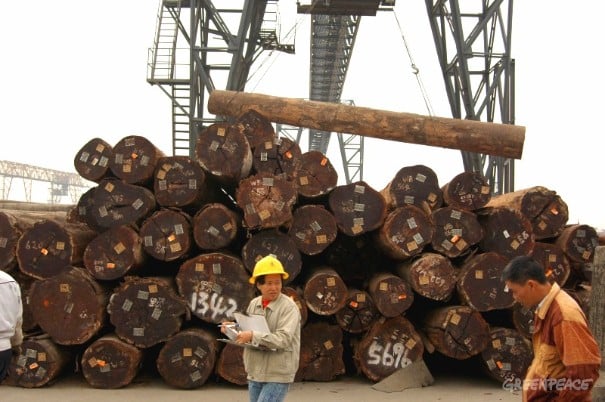China’s hunger for development has put its forests under incredible stress. Tragically, development has robbed the country of almost all of its great primeval forests, through which elephants once roamed as far as Beijing.
Today, only 3.34% of its forests remain intact – that’s just 69,486 square kilometers.
China’s remaining intact forests are scattered throughout the country:
- Southwest: Western Sichuan; the Nu-Salween River valley and around the Myanmar border in Yunnan; the Yarlung Tsampo River canyon
- Northeast: the Daxing’an mountains in northern Inner Mongolia
- Northwest: the northernmost area of Xinjiang.
After the devastating Yangtze River floods of 1998 exposed the dangerous repercussions of deforestation, China introduced the “Natural Forests Protection Project” to severely restrict the logging of domestic forests. This was a significant turning point in China’s forest protection policies and created a vital breathing space for the country’s depleted forests.
Yet the policies did not reduce industry and market demand for timber resources – as a result, 1998 also marks a turning point for China’s role in the global timber trade. Increasingly, China became more and more reliant on imported wood, and thus contributing to illegal logging.
Natural Forests Protection Project
The Natural Forests Protection Project aimed to stop logging in protected forests in the mid- and upper reaches of the Yangtze and the Yellow River. Another goal was to greatly decrease commercial logging in those areas, as well as in northeastern China and northern Inner Mongolia.
In the last 10 years, these initiatives have been relatively successful in protecting the already-depleted forest resources of the upper reaches of the Yangtze River, mid- and upper reaches of the Yellow River and northeastern China.
In 2010, the government announced the second phase of the Natural Forests Protection Project, to last until 2020. The next phase places more forests under protection while continuing the moratorium on logging along the upper reaches of the Yangtze and Yellow rivers. However, there is a danger: while China’s forest coverage has been growing, much of this is due to the increase in plantation forests.
Plantations: A False Solution
The rapid development of commercial plantation forests is obscuring the true state of China’s forests – especially when natural forests are destroyed to plant fast-growing eucalyptus or poplar.
In the last ten years, eucalyptus has become the most common plantation tree globally. In southern China, massive plantations of eucalyptus are grown primarily for paper pulp, while in northern China, fast-growing poplar is the primary plantation tree.
Plantation forests destroy ecology and biodiversity, degrade forest quality and threaten the vitality of natural forests. Yet in China, forest coverage is often increased by cutting down natural forests and replacing them with plantations.
Chinese Companies Abroad
Many Chinese businesses and some large state-owned companies have purchased or invested in ancient forests, plantation forests, or mining resources in other countries. Some of these companies have been engaging in deforestation, such as logging, razing ancient forests for plantations, and destroying local ecologies for mining.
Greenpeace recommends that the government take action to supervise and control the activities of its businesses abroad for the long-term sustainability of forests world-wide. The government should also take steps to implement its “Guide on Sustainable Overseas Silviculture by Chinese Enterprises” and “A Guide on Sustainable Overseas Forests Management and Utilization”.

